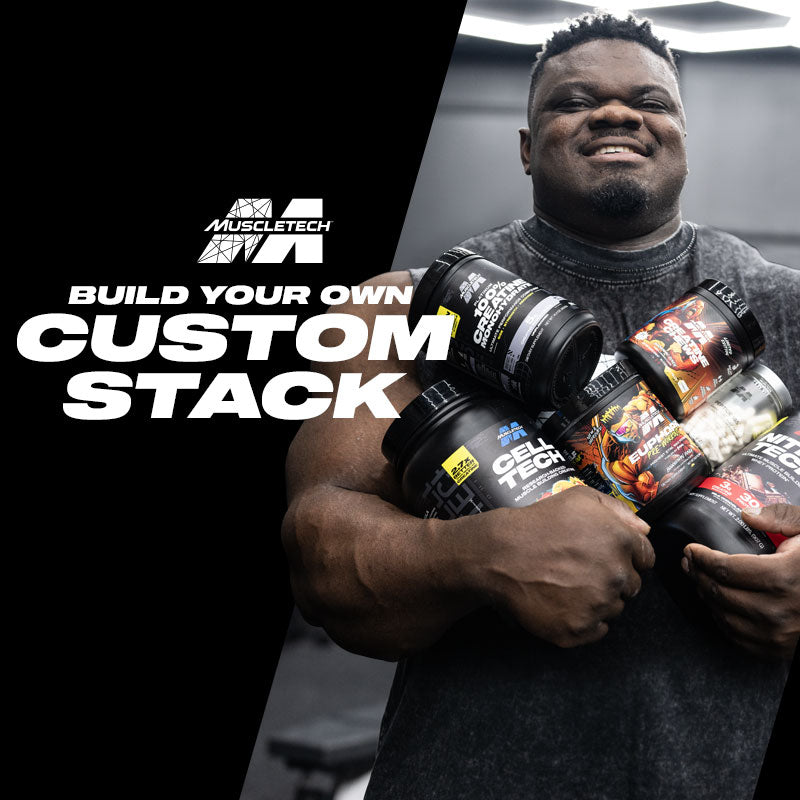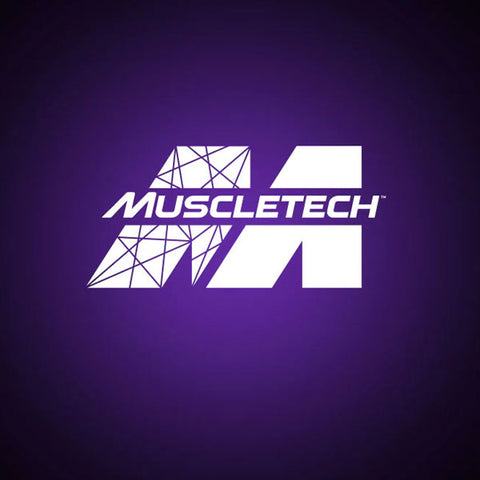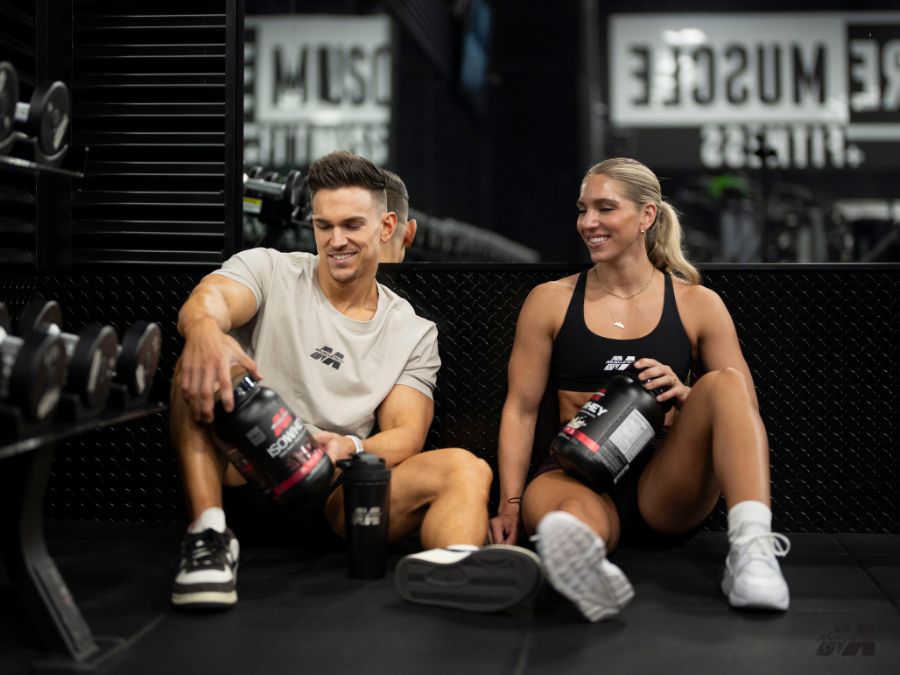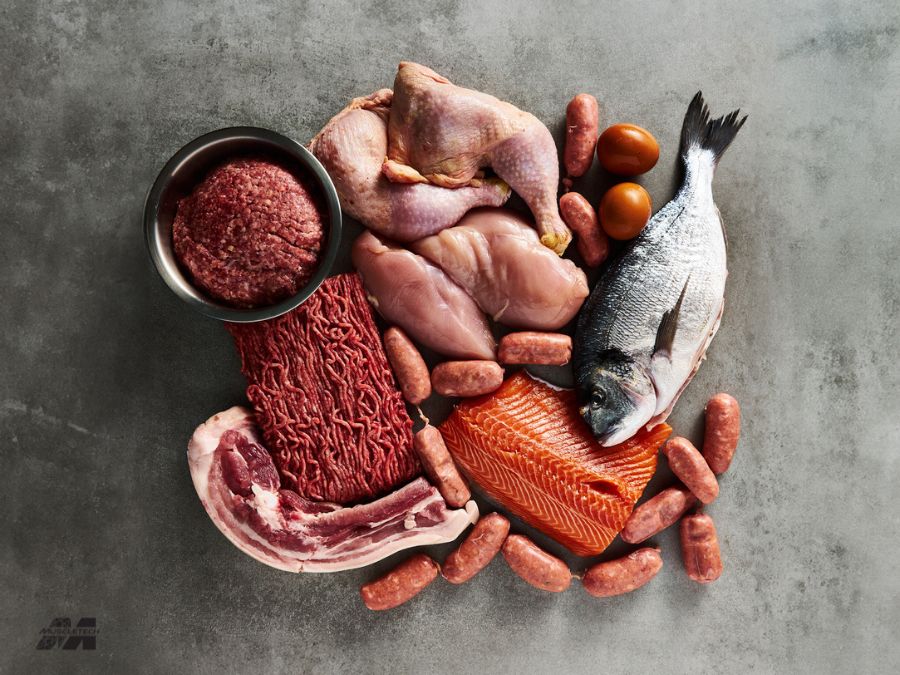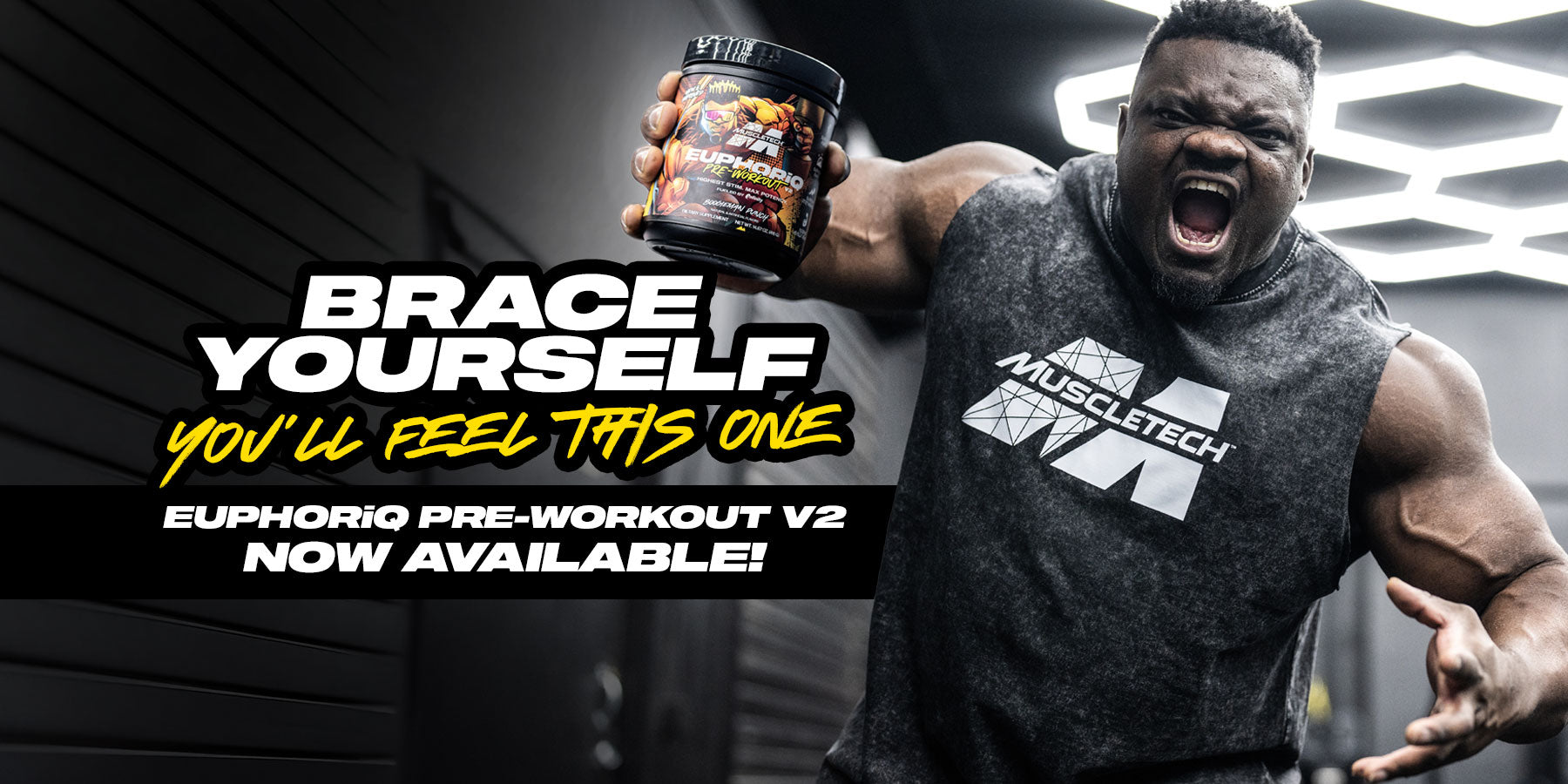Looking To Get To The Promised Land of the Swole and Strong By Getting On Creatine? Well then, soon-to-be-huge, here are a few things you should know about Creatine and how it puts you on the fast track to results.
Ok, first off, you should know that creatine is a naturally occurring substance in the human body, which is primarily found in muscle tissues and the brain. (1)
Creatine plays an essential role in energy production for fast, high-intensity activities by increasing the production of adenosine triphosphate (ATP). Which is considered the primary energy "currency" of the body. (1)
Think of exercise as a series of transactions in the body. For every muscle contraction required, you must give up some ATP. The more physically demanding the exercise, the more ATP you must give. As you progress throughout your workout, you deplete ATP stores in the muscle and performance starts to get hampered. This is where creatine can make an enormous difference.
Creatine helps replenish ATP supplies in the muscle. Therefore, by taking creatine and increasing muscle stores of this powerful nutrient, you can increase in ATP production, which ultimately increases performance during short and intense activities such as weightlifting or sprinting. (1)
So, in a sense, creatine is an energy supplement.
However, it can also be beneficial for growing muscle mass, increasing strength, and more. (1)
Table of content
Natural Sources of Creatine
Creatine can be synthesized by the body and consumed through various animal products.
1. Meat
Animal products classified as red meat, such as beef and pork, provide a small amount of creatine.
Thus, people who consume adequate amounts of red meat typically have higher resting creatine stores than those who avoid red meat. (1)
Also Read: Should I Take Creatine on Rest Days?
2. Fish
Fish products such as salmon, tuna, and herring also contain a small amount of creatine. Plus, the advantage to consuming these types of fish is that they also contain other nutrients, such as Omega-3 fatty acids, which are anti-inflammatory and support cardiovascular health. (1)
Human Body's Production
Your body can also produce creatine from the amino acids arginine, glycine, and methionine. (1)
This endogenous production of creatine typically yields 1-2 grams of creatine per day. Despite this, if you are looking to beef up and strengthen your muscles then you will want to supplement your diet with a creatine product.
While you can get creatine from foods and your body does make it, as mentioned, higher amounts make a huge difference and can be best achieved through supplementation. (1)
Also Read: When to Take Creatine?
Different Creatine Supplements
When it comes to creatine supplementation, there are several different forms you can choose from. Each type has different properties and potential benefits.
1. Creatine Monohydrate
Creatine monohydrate is the most common form of creatine and the most extensively researched. (1)
It is highly effective form of creatine that has been proven to increase muscle mass, strength, and athletic performance. (1)
2. Creatine Ethyl Ester
Creatine ethyl ester is purported to be absorbed more efficiently and quickly than creatine monohydrate. (2)
This is due to its increased ability to cross cell membranes more efficiently.
However, research has shown that creatine ethyl ester was less effective than creatine monohydrate for saturating, creating stores, and improving muscle mass, strength, and body composition. (2)
Also Read: Deciphering The Difference Between BCAAs Vs. Creatine
3. Creatine Hydrochloride (HCL)
Creatine hydrochloride is a form of creatine designed to be more soluble in water. This helps to reduce the gastrointestinal stress that can be caused by other forms of creatine. (3)
Unlike ethyl ester, creatine hydrochloride has been shown in research to increase strength similarly to creatine monohydrate. However, creatine hydrochloride reduced the amount of water retained by subjects and showed improvements in body composition. (3)
How Does Creatine Improve Performance?
As mentioned above, creatine enhances performance by increasing the amount of ATP available for high-intensity activities. Here is a practical example on how it does so:
During exercise, the muscles must contract to produce the force necessary to perform the task. For muscle contraction to happen, the body must “cleave off” a phosphate molecule from ATP, which then becomes adenosine diphosphate (ADP). This reaction produces energy, which is then utilized to fuel the contraction.
As mentioned, there is a limited amount of ATP in the muscle. As you progress throughout the workout, ATP and performance start to dwindle. This is where creatine lends itself.
When creatine enters a muscle cell, it bonds with a phosphate molecule to form creatine phosphate. When ATP gives up its phosphate molecule to produce energy and becomes ADP, the creatine phosphate molecule donates its phosphate to turn ADP back into ATP.
Therefore, the more creatine stored in the muscle as phosphocreatine, the more available it is to donate a phosphate to Adenosine diphosphate to regenerate ATP.
This regeneration of ATP allows for higher intensities to be achieved during training and competition and faster recovery times between bouts.
Additionally, creatine supplementation allows for increased training volume and muscle protein synthesis, promoting greater gains in muscle mass. (1)
Combining increased muscle mass and more frequent training at high intensity creates a powerful long-term strength-boosting effect. (1)
Also Read: How Much Water Should I Drink While Taking Creatine?
What Are The Benefits of Creatine For Beginners?
The following benefits are the top ones you will see by increasing your creatine intake via diet, supplementation or both.
1. Enhanced Athletic Performance
If your sport involves fast, high-intensity movements like sprinting, lifting, or throwing, you will definitely benefit from creatine supplementation.
By elevating the amount of creatine in your muscles and, ultimately, the availability of ATP, you can repeat these high-intensity bouts more frequently than someone without fully saturated creatine stores.
With training, you will also be able to produce higher magnitude efforts as your muscle mass, strength, and power increase.
Ultimately, this results in elevated physical performance.
Also Read: Best Creatine for Women [Top 5 Products]
2. Increased Muscle Mass and Strength
Muscle mass and strength improvements due to creatine supplementation manifest from optimized training over time.
Elevated muscle creatine levels create an ideal environment for muscle growth. The increase in creatine and ATP allows you to lift more weight more frequently.
This results in increased muscle breakdown and, with the right nutritional strategies, more muscle mass and strength development.
Creatine intake also promotes increased muscle protein synthesis through several potential mechanisms. (4)
Creatine monohydrate also promotes water retention in the muscle tissue, creating an anabolic effect due to osmotic pressure. In other words, you get swole! It also affects the mTOR pathway, which directly stimulates muscle growth. (4)
Also Read: Should I Load Creatine or Not?
3. Improved Recovery Times
As mentioned, creatine intake can reduce recovery times between high-intensity bouts.
Since there is more substrate available to regenerate ATP, the muscle can contract, deplete its energy stores, and then quickly regenerate its ability to produce force again.
Additionally, creatine has been shown to reduce muscle cell damage and inflammation, which can reduce recovery time between sessions. (5)
Also Read: Can I Mix Creatine with Pre-Workout?
4. Potential Cognitive Benefits
Emerging research also supports the use of creatine to enhance cognition. Consistent supplementation can increase brain creatine content by up to 15%. (6)
In instances where subjects were sleep-deprived but supplementing with creatine, significantly less decrement in random movement generation reaction time, balance, and mood was observed. (6)
How to Take Creatine?
If you are ready to start supplementing creatine as a beginner then make sure to follow these steps. By doing so you will consume the right amount of creatine based on your body size and fully saturate your creatine stores quickly.
1. Loading Phase
The initial loading phase is crucial to optimize the results you get from supplementation.
During the loading phase, the goal is to thoroughly saturate the muscle's creatine stores to provide a muscle-building and performance-enhancing effect.
To initiate the loading phase, you would consume ~20g of creatine per day, broken up into two to four daily feedings for up to a full week. (1)
Some believe a loading phase is not necessary. However, without one, it will take substantially longer to fully saturate the muscle tissues' creatine stores and begin reaping the benefits of supplementation.
Also Read: What Does Creatine Do for Women?
2. Maintenance Phase
The maintenance phase begins once the 5-7 day loading phase is complete.
The goal of the maintenance phase is to keep the muscle's creatine stores completely saturated daily.
This is done by reducing the amount of creatine you consume each day to a simple 5g per day. The creatine maintenance phase dose is best taken after training when the muscles are primed for absorption. (1)
This maintenance phase can be continued long-term, as little to no research supports any harmful effects of long-term creatine supplementation. (1)
Also Read: What Foods Contain Creatine?
Benefits of Mixing with a High Glycemic Carbohydrate
Mixing your creatine supplement with a high-glycemic carbohydrate can increase its uptake by simultaneously producing an insulin spike. (1)
High-glycemic carbohydrates, such as glucose or dextrose, raise blood sugar rapidly because they are digested quickly.
With the associated insulin spike, there is increased uptake of creatine into the muscles. (1)
The combination of the two substances can lead to better muscle absorption of the supplement than when it is combined with water alone. (1)
Also Read: Does Creatine Make You Gain Weight?
High-Quality Creatine Options
If you are unsure which creatine supplement you should take, be sure to consider the following options as they are designed specifically for hard-training athletes and bodybuilders.
Platinum 100% creatine is an ultra-pure, HPLC-tested creatine supplement that provides 5g of high-quality creatine in each serving and 80 servings per container.
The creatine in Platinum 100% creatine is also micronized to improve absorption. It is proven to increase muscle mass, strength, and performance in the gym.
Each serving provides 5g of creatine per serving and is designed to help you achieve superior muscle growth and performance.
Cell-Tech capitalizes on the evidence-based benefits of combining your creatine with carbs.
The combination of creatine monohydrate and carbs creates an insulin spike, which helps rapidly regenerate your glycogen stores and optimize creatine storage.
Additionally, each servings provides a 2:1:1 ratio of BCAAs, taurine, and alanine, which help to increase cell volumization and results.
Creatine Chews are a delicious and convenient way to consume creatine. Unlike most creatine products, which come in a powder or capsule, Creatine Chews is a chewable tablet that provides 3g of creatine in each 3-tablet serving.
Taking Creatine Chews with you on the go makes getting your creatine simple, with no need for a liquid or a shaker bottle.
They are also powered by Creapure®, one of the most widely studied forms of creatine available. The chews are also Kosher and Halal certified, making them ideal for various dietary preferences.
Final Thoughts On Creatine For Beginners
Creatine is a must-have supplement. It is one of the most commonly researched supplements on the market today and has been deemed effective and safe to consume to this point.
By incorporating a high-quality creatine supplement like the ones mentioned above, you can rapidly decrease the time it takes you to start growing muscle mass, increasing strength, and improving athletic performance.
By using this article as a guide and beginning your creatine supplementation, you can fast track your gains and start seeing the results you are looking for in no time.
References:
- Buford, T. W., Kreider, R. B., Stout, J. R., Greenwood, M., Campbell, B., Spano, M., Ziegenfuss, T., Lopez, H., Landis, J., & Antonio, J. (2007). International Society of Sports Nutrition position stand: creatine supplementation and exercise. Journal of the International Society of Sports Nutrition, 4, 6. https://doi.org/10.1186/1550-2783-4-6
- Spillane, M., Schoch, R., Cooke, M., Harvey, T., Greenwood, M., Kreider, R., & Willoughby, D. S. (2009). The effects of creatine ethyl ester supplementation combined with heavy resistance training on body composition, muscle performance, and serum and muscle creatine levels. Journal of the International Society of Sports Nutrition, 6, 6. https://doi.org/10.1186/1550-2783-6-6
- Yoshioka, C. A. F., Madureira, D., Carrara, P., Gusmão, N., Ressureição, K. S., Santana, J. O., ... & Caperuto, E. C. (2019). Comparison between creatine monohydrate and creatine HCl on body composition and performance of the Brazilian Olympic team. Int. J. Food Nutr. Res, 3, 1-12. https://www.academia.edu/download/97844311/IJFNR-2019-05-2205.pdf
- Farshidfar, F., Pinder, M. A., & Myrie, S. B. (2017). Creatine Supplementation and Skeletal Muscle Metabolism for Building Muscle Mass- Review of the Potential Mechanisms of Action. Current protein & peptide science, 18(12), 1273–1287. https://doi.org/10.2174/1389203718666170606105108
- Cordingley, D. M., Cornish, S. M., & Candow, D. G. (2022). Anti-Inflammatory and Anti-Catabolic Effects of Creatine Supplementation: A Brief Review. Nutrients, 14(3), 544. https://doi.org/10.3390/nu14030544
- Kreider, R. B., Kalman, D. S., Antonio, J., Ziegenfuss, T. N., Wildman, R., Collins, R., Candow, D. G., Kleiner, S. M., Almada, A. L., & Lopez, H. L. (2017). International Society of Sports Nutrition position stand: safety and efficacy of creatine supplementation in exercise, sport, and medicine. Journal of the International Society of Sports Nutrition, 14, 18. https://doi.org/10.1186/s12970-017-0173-z
